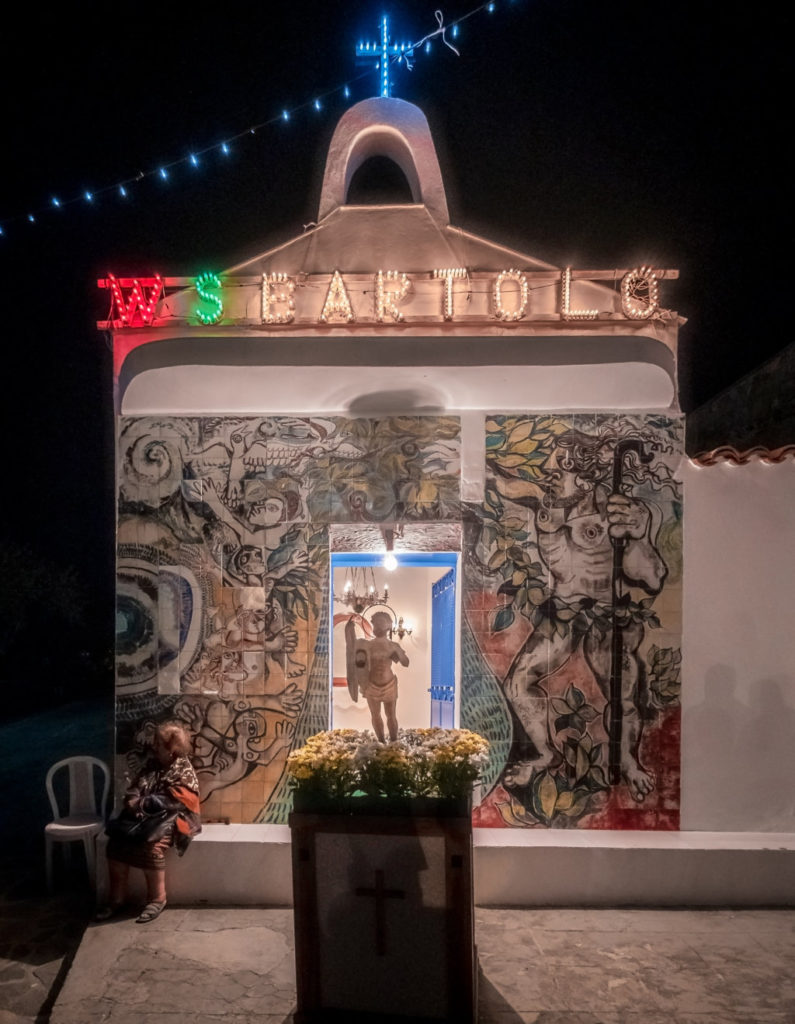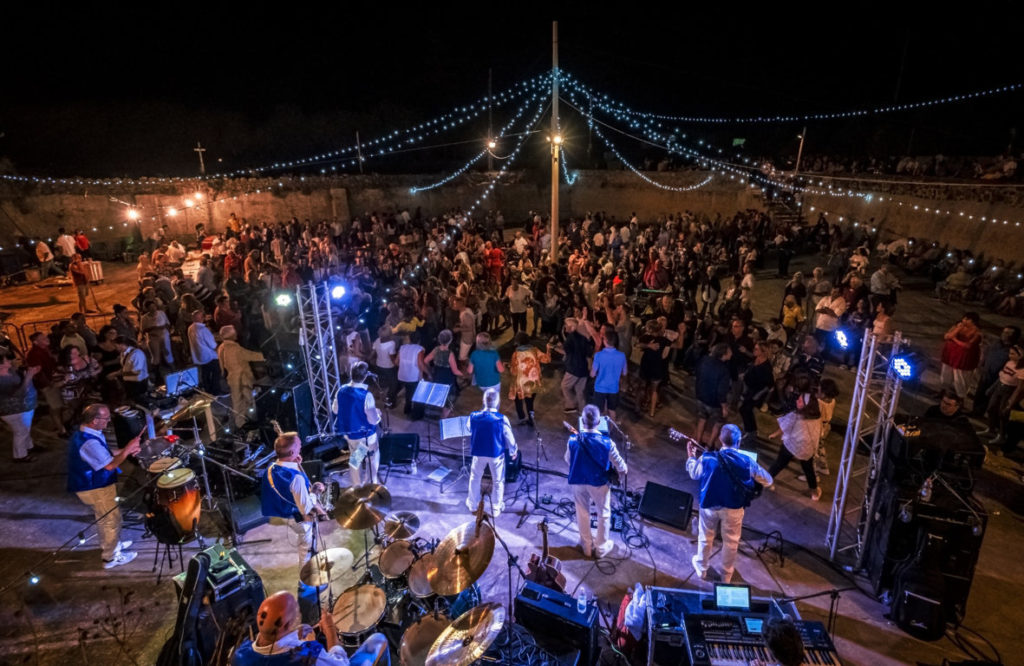San Bartulicchiu, the “Little” Patron Saint of Ustica
This is the same saint, Saint Bartholomew, but the devotion here is linked to a specific local event: a storm once destroyed the seaside niche that housed the statue of the “little” patron. According to local belief, it was Saint Bartulicchiu’s intercession that prevented a tragedy during this natural disaster.
After the niche was destroyed, a farmer donated a piece of his land to build a small private chapel, which he and his son still maintain. The feast of San Bartulicchiu is celebrated on the second Sunday of September, and it’s a rural celebration held in the Oliastrello area, where the chapel was built.
Inside the chapel is a small statue of the saint, smaller in size than the main statue. In the nine days leading up to the feast, a novena is held every evening at 9:00 PM, marked by a bell calling people to prayer, which consists of a Sicilian sung rosary—the same one recited for the main Saint Bartholomew.
The celebration culminates in a “gorgo”—a basin for collecting rainwater used for agriculture and animals. The final night of the novena is a moment of community gathering with food, live music, and games for children, such as the traditional “pentolaccia” (a game involving hitting hanging clay pots to release their contents).
The procession takes place on the Sunday after the novena (the second Sunday of September), starting at 5:30 PM and lasting about an hour. The statue is placed on a fercolo (carrying platform) and processed through the countryside, followed by a band. After the procession, the statue is placed first in the gorgo, then in front of the chapel to “watch” the fireworks with the devotees, before being returned inside the chapel.
This element has been included in the Register of Intangible Heritage of local interest of the Municipality of Ustica, as part of Intervention 2 “Activation of the Observatory on the Intangible Cultural Heritage of the Territory through the application of the REIL methodology – Register of Intangible Heritage of Local Interest”, within the”Ustum Cultural Programme” project, funded by the NRRP (National Recovery and Resilience Plan), Mission: Digitalisation, innovation, competitiveness, culture and tourism, Component: Tourism and culture 4.0, Investment 2.1 “Attractiveness of villages.” CUP: E24H22000130006.



